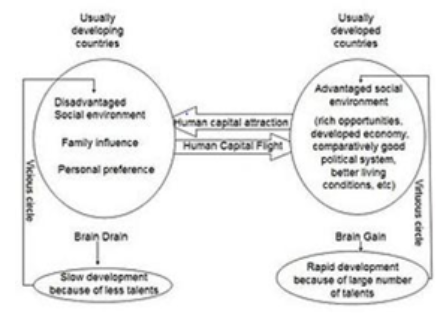Monday, 9th October 2023
Concerns of Caste-Based Discrimination
In News: The Right to Food Campaign, a coalition of nonprofits, strongly criticised Gujarat’s Patan district collector’s directive that mandated the transferring of all ration cards from a fair price shop (FPS) run by a Dalit dealer in Kanosan village to its nearby village.
About the incident:
- Patan District Collector shifted the ration cards of all 436 households in Kanosan to the neighbouring Edla FPS following an alleged social boycott by the Thakor community (Other Backward Class community).
- Kanosan village has over 2,200 residents, and nearly 90 percent of them belong to the Thakor community.
- This directive was issued when the majority of the Kanosan village’s non-Dalit residents stopped buying their monthly ration from the FPS.
- The Dalit FPS vendor has been in charge of the dealership for the last three decades.
- A backlash commenced two years ago when a Thakor village leader was denied rations because of the invalidity of his ration card, according to the convenors.
- The FPS was initially boycotted after false accusations of improper ration distribution.
- Following a series of events that led to mental trauma for the Dalit vendor, he attempted suicide by ingesting poison.
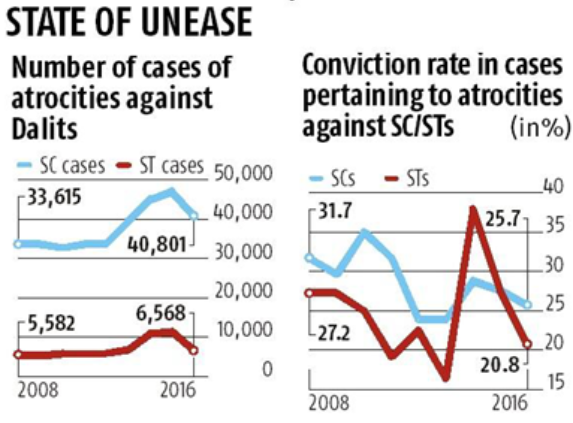
-
- A lawsuit was then brought after this, and five people were arrested. However, within a month of being freed on bail.
What are the ethical issues concerning the case?
- Caste-based discrimination
- The convenors of the Right to Food Campaign, have said that social exclusion of a person, family or group of a specific caste, economic boycott, hindering their employment, business, or shop are caste-based discriminations.
- It violates Articles 14 and 15 of the Constitution of India.
- Violation of Scheduled Caste and Schedule Tribe (Prevention of Atrocities) Act 1989 amended 2015
- The law provides for action if an individual is humiliated, abused, or for creating a feeling of enmity, hatred and animosity against a Scheduled Caste person.
- In this case the person was forced to attempt suicide, therefore, crimes of serious nature as per the IPC along with other sections mentioned above need to be applied immediately
- Violation of the National Food Security Act (NFSA), 2013

-
- The mental torture of a Dalit FPS dealer is caste-based violence that also violates the NFSA which upholds the democratic empowerment of FPSs in the village by advocating giving distribution control to the marginalised community of the society.
- Impact on livelihood and well-being
- Most upper-caste households that ceased purchasing rations from him wrote a letter to the district collector requesting that their ration cards be transferred to the nearby village of Edla.
- The Dalit FPS dealer’s license is about to be revoked at the moment.
- Dereliction of duty of public officials
- The conduct of the district collector and the failure to address caste-based discrimination highlight concerns about the ethical responsibilities of public officials in upholding justice and equity.
Deaths in India’s Prisons - Edukemy Current Affairs
Why in News: Recently, the Supreme Court Committee on Prison Reforms has found suicide to be one of the leading causes of Unnatural Deaths among Indian prisoners.
Classification of Prison Deaths:
- The National Crime Records Bureau (NCRB)'s annual Prison Statistics India report categorises deaths in prison as Natural or Unnatural. 2,116 convicts passed away in court custody overall in 2021, with natural causes accounting for over 90% of all deaths.
- Ageing and sickness are accounted for through natural deaths. Additional subcategories of illness include illnesses including cancer, heart problems, HIV, TB, and other ailments. Recorded natural deaths have gone up from 1,424 in 2016 to 1,879 in 2021 as the jail population grows.
- The Unnatural deaths are classified as:
- Suicide (due to hanging, poisoning, self-Inflicted injury, drug overdose, electrocution, etc.)
- Death due to inmates
- Death due to assault by outside elements
- Death due to firing
- Death due to negligence or excesses
- Accidental deaths (natural calamities like earthquakes, snakebites, drowning, accidental fall, burn injury, drug/alcohol consumption, etc.
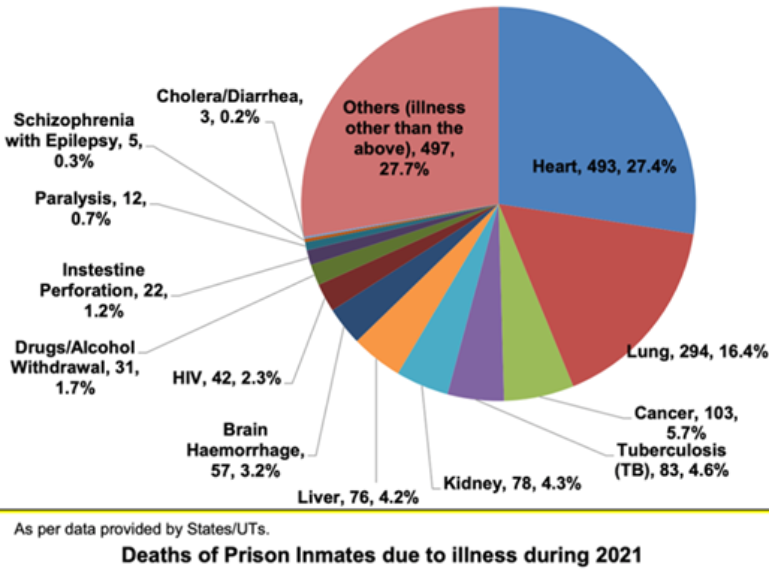
Death Investigation:
- Since 1993, a custody death must be reported to the NCRB within 24 hours, followed by post-mortem reports, findings from a magistrate's inquest, or post-mortem videography reports.
- The Code of Criminal Procedure also mandates a mandatory judicial magisterial inquiry in place of an executive magistrate probe for cases of prison rape and death.
Initiatives to reduce prison deaths:
- Supreme Court:
- In a 1996 verdict, the Supreme Court described the societal responsibility to care for the health of inmates, noting that they had a "double handicap": "First, although free persons have access to medical professionals, inmates do not. Due to their confinement, they are unable to access their preferred doctor, second views, or experts. Second, due to the conditions of their detention, prisoners are more likely to experience health problems than free people.
- Government Efforts:
- The Model Prison Manual of 2016 and the Mental Healthcare Act of 2017, outline inmates’ right to healthcare.
- The right to healthcare for prisoners is outlined in both the 2017 Mental Healthcare Act and the 2016 Model Prison Manual.
- In order to prevent similar incidents, it is necessary to make enough investments in healthcare facilities, establish mental health units, educate police to offer basic and emergency treatment, and create initiatives to prevent suicide.
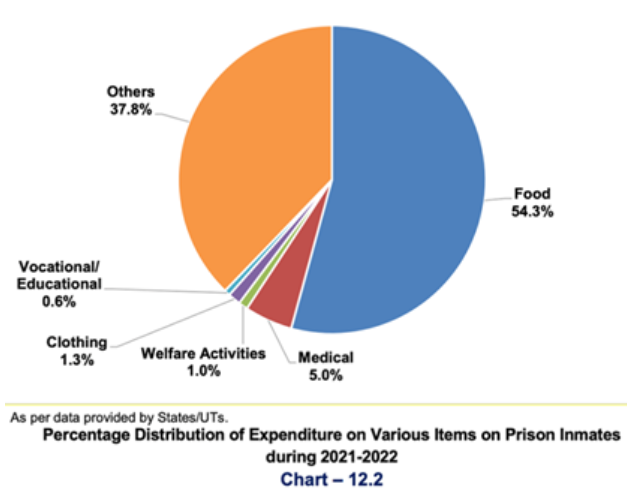
National Human Rights Commission’s Recommendations Related to Prison Deaths:
- Preventing Suicide Attempts: Regular check and vigil on bed sheets and blankets of inmates be exercised to ensure that these are not used to make ropes, etc. to attempt suicide.
- Mental Health Training for Staff: A component of mental health literacy must be included in the basic training of prison staff with periodical refresher courses.
- Regular Observation and Support: Regular observation by prison staff and assignment of a prisoner ‘buddy’, trained in psychological first aid.
- Gatekeeper Model Implementation: (devised by the World Health Organization, WHO), to strengthen mental health care in prisons be implemented for training of carefully selected inmates to identify prisoners at risk of suicide.
- Addressing Addiction Issues: Measures to tackle the issue of addiction among prisoners be undertaken by regular visits of mental health care professionals and de-addition experts.
- Life-Skill Education and Activities: Prisoners must be provided with life-skill based education and activities like yoga, sports, crafts, drama, music, dance, and suitable spiritual and optional religious instructions to channelize their energies positively and occupy their time. This can be done with the help of reputed NGOs if required.
World Health Organization's Specs 2030
Why in News: According to the WHO, at least 2.2 billion people function with compromised eyesight and at least a billion of these were preventable with access to eye care. Around 90% of those with vision impairment or blindness live in low- and middle-income countries.
Specs 2030:
- The World Health Organisation (WHO) will introduce the SPECS 2030. The programme aims to support member nations in meeting unmet spectacles needs while assuring the provision of high-quality eye care.
- It envisions an event in which anybody in need of a refractive error intervention has access to high-quality, reasonably priced, and client-focused refractive error treatment options.
- It has the mission to support Member States with the achievement of the 74th World Health Assembly endorsed 2030 target on effective refractive error coverage.
Refractive Error of Vision:
- Refractive error of vision is a common eye condition that affects the way light is focused on the retina (a light-sensitive layer of tissue in the back of your eye), leading to blurred or distorted vision.
- Types of Refractive Error of Vision:

-
- Myopia (Near-sightedness): Difficulty seeing distant objects, clear near vision. Light focuses in front of the retina.
Correction: Corrected with a concave lens.
-
- Hypermetropia (Farsightedness): Difficulty seeing nearby objects, relatively clear distant vision. Light focuses behind the retina.
Correction: Corrected with a convex lens.
-
- Presbyopia: Age-related difficulty focusing on close objects, typically around middle age.
Correction: Corrected with bifocal lenses (both convex and concave).
-
- Astigmatism: Blurred or distorted vision at any distance. Irregular cornea or lens shape causes uneven light focus.
Correction: Corrected with a cylindrical lens.
Impact of Vision Impairment:
- According to WHO, over 2.2 billion people globally suffer from compromised eyesight. At least 1 billion of these cases could have been prevented with access to proper eye care. A staggering 90% of individuals with vision impairment or blindness reside in low- and middle-income countries.
- According to the WHO, at least 100 million Indians need spectacles but have no access to them.
- Vision impairment results in a significant global economic loss of approximately USD 410.7 billion. The cost of ensuring access to eye care and treatment for all is estimated at USD 24.8 billion, according to the WHO.
- Myopia is increasing globally. In China, the average onset of myopia has shifted from 10.5 years to 7.5 years in just two decades. By 2050, it is projected that 50% of the world's population will be myopic. It is predicted that half of the world's population will require glasses in the near future.
Way Forward:
- Combating myopia may be accomplished by encouraging outdoor activities, reducing screen usage, and keeping an eye on kids' eye health.
- Promoting regular vision tests among people of all ages is crucial for early diagnosis and intervention.
- It is crucial to provide infrastructure for easily accessible eye care services, particularly in remote and underserved areas.
- It is important to undertake public education initiatives to raise awareness about refractive defects and how they affect eyesight.
- To realise the objectives of the Specs 2030, it is crucial to promote cooperation and investment from governments, NGOs, and the business sector.
UPSC CSE Previous Year Question
Mains
- Appropriate local community-level healthcare intervention is a prerequisite to achieving ‘Health for All’ in India. Explain. (2018)
Cholera - Edukemy Current Affairs
Why in news? According to the World Health Organization (WHO)’s weekly Epidemiological Record, the World reported more than twice as many cholera cases in 2022 as it did in 2021.
About:
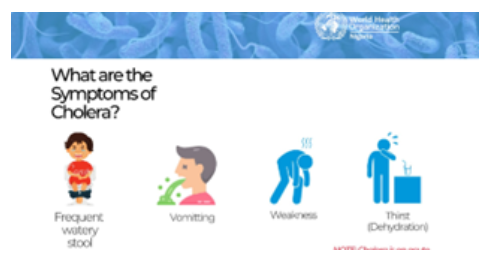
- Cholera is a water-borne disease caused by two strains called O1 and O139 of the bacteria Vibrio cholerae.
- Of these, O1 is responsible for almost all outbreaks; outbreaks of O139 are rare and none have been recorded outside Asia.
- It is an acute diarrheal illness caused by infection of the intestine.
- Symptoms:
- Profuse watery diarrhoea, Vomiting, Leg cramps etc.
- The infection is often mild or without symptoms, but sometimes can be severe.
- Transmission:
- It is transmitted to humans through water or food which is contaminated with the cholera bacterium.
- The disease can spread rapidly in areas with inadequate treatment of sewage and drinking water.
- Vaccine:
- Currently there are three WHO pre-qualified Oral Cholera Vaccines (OCV), Dukoral, Shanchol, and Euvichol-Plus.
- All three vaccines require two doses for full protection.
Allah Baksh and Mewari Style Painting
Why in news? Allah Baksh, a Mewari miniature painter late 17th century, portrayed the Interpretation of Mahabharata in his Painting and is known for his intricate and delightful representation.
About:
Allah Baksh
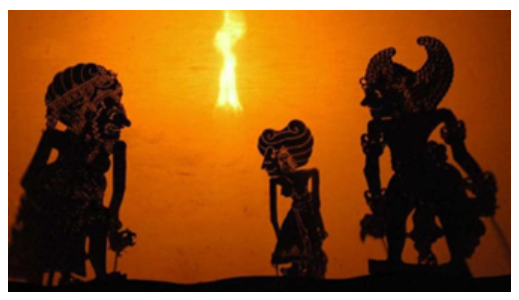
- Allah Baksh, a notable Mewari painter during Maharana Jai Singh’s reign (1653-98), is renowned for creating comprehensive depictions of the entire Mahabharata and including every shloka of the Gita.
- Each painting by Allah Baksh meticulously portrays the details of characters' costumes, the flora and fauna in the background, and the depiction of magical and mystical events.
- These miniatures encapsulate a delightful representation of the Mahabharata, showcasing a dialogue between the verbal and visual imaginations of the poet and the painter.
Mewari Style Painting
- The Mewar school of miniature painting, renowned for vibrant colors and intricate narratives within a single frame, flourished from the 17th to the 18th century.
- It is a school in the Rajasthani style.
- It developed in the Hindu principality of Mewar (Udaipur).
- Rajasthan also hosts other miniature painting schools, such as Marwar-Jodhpur, Kishangarh, Deogarh, and sub-Himalayan kingdoms like Chamba and Kangra. Each of these Indian miniature art schools had its distinct style.
- A renowned painter associated with Mewār painting is Sahibdin, who is famous for his work on the Ragamala in 1628.

Copyright Infringement and Passing Off
Why in news? Recently, The Delhi High Court has issued summons to an Instagram account called People of India (POI), in a copyright infringement suit filed by the storytelling platform Humans of Bombay (HOB).
About:
Copyright infringement:
- It occurs when a copyrighted work is used without authorization, particularly if a substantial part of the work is reproduced.
- In HOB's case, the court observed "substantial imitation" between HOB and POI, but the degree of what is considered "substantial" can vary.
Copyright:
- Copyright refers to the legal protection provided to creators of literary, dramatic, musical, and artistic works, as well as producers of cinematograph films and sound recordings.
- Unlike the case with patents, copyright protects the expressions and not the ideas.
- Copyright owners have the right to take legal action against infringers, including seeking remedies such as injunctions, damages, and accounts.
Passing Off:
- In the Cadila Healthcare Limited vs. Cadila Pharmaceuticals Limited case, 2001 the Supreme Court ruled that passing off is a form of unfair trade competition through which one party attempts to benefit from the reputation established by another in a particular trade or business.
More Information:
- In the recent case of HOB vs. POI, HOB sought an injunction to prevent the infringement of their copyrighted content.
- This dispute stems from significant similarities in their storytelling methods, with HOB asserting that POI copied their content.
- This case emphasizes substantial legal concepts including copyright infringement, injunctions, and passing off.
- An injunction is a court order that typically directs someone to stop a particular action.
- However, obtaining an injunction is not a guarantee that all instances of misuse will be rectified immediately, as enforcing it can be challenging.
- This case emphasizes substantial legal concepts including copyright infringement, injunctions, and passing off.
Nobel Prize in Literature 2023
Why in news? Recently, The Nobel Prize for Literature 2023 has been awarded to Norwegian author Jon Olav Fosse, for his “innovative plays and prose which give voice to the unsayable”.
About:
Jon Fosse:

- Jon Fosse, a Norwegian author and dramatist, writes in Norwegian Nynorsk, the less common of the two official versions of Norwegian language.
- Jon Fosse is celebrated for his writing style, often referred to as "Fosse minimalism."
- Features of his work:
- His work is characterized by a radical reduction of language and dramatic action, which expresses powerful human emotions like anxiety and powerlessness in simple terms.
- Writing styles:
- His style is characterized by simple, minimal, and searing dialogue, drawing comparisons to literary giants like Samuel Beckett and Harold Pinter, both of whom have previously been awarded the Nobel Prize in Literature.
- Themes
- His themes explore the absurdity, the futility and yet the power of the human condition; everyday confusions and irresolution’s; and the difficulty of forming actual connections.
- Notable Works:
- His work has been translated into more than 40 languages.
- Fosse has written around 40 plays, apart from novels, short stories, children’s books, poetry and essays.
- His “A New Name: Septology VI-VII” was a finalist for the International Booker Prize last year.
- Other notable works by Fosse include I Am the Wind, Melancholy, Boathouse, and The Dead Dogs.
Nobel Prize
- Nobel Prize is a prestigious prize awarded separately in six different fields “to those who, during the preceding year, have conferred the greatest benefit to humankind”.
- Originally, the prize was awarded in the fields of Physics, Chemistry, Physiology or Medicine, Literature, and Peace.
- Later in 1968, a sixth prize was added in the field of economic sciences.
- In 1968, Sveriges Riksbank (Sweden's central bank) established the Prize in Economic Sciences in Memory of Sir Alfred Nobel, founder of the Nobel Prize.
- The first Prizes were awarded in 1901.
- The Nobel Prize consists of a Nobel Medal and Diploma, and a document confirming the prize amount.
- The Nobel Prize cannot be given posthumously, and it cannot be shared between more than three people.
- One cannot nominate himself/herself for a Nobel Prize.
- The Nobel Peace Prize is awarded in Oslo, Norway, while the others are awarded in Stockholm, Sweden.
- The Nobel Foundation, a private institution established in 1900, oversees the administration of the prizes and ensures the independence of the prize-awarding institutions.
More Information:
- The 2022 Nobel Prize in Literature was awarded to French author Annie Ernaux for her fearless exploration of personal memory, delving into its origins, estrangements, and collective constraints with clinical precision and courage.
- The Nobel Prize in Literature 1913 was awarded to Rabindranath Tagore "because of his profoundly sensitive, fresh and beautiful verse, by which, with consummate skill, he has made his poetic thought, expressed in his own English words, a part of the literature of the West".
Government Exempts Aviation from IBC's Moratorium
In News: Corporate affairs ministry exempts aviation from IBC's moratorium clause.
About
- In order to provide relief to aircraft lessors (a business that leases its fleet of aircraft to airlines), the Ministry of Corporate Affairs (MCA) exempted all transactions and agreements pertaining to aircraft and their engines from the moratorium (temporary suspension of an activity) under Section 14 of the Insolvency and Bankruptcy Code (IBC), 2016.
- When the Indian airline Go First filed for insolvency, the National Company Law Tribunal (NCLT) prohibited aircraft lessors from repossessing the aircraft.
- The exemption is in line with the Cape Town Convention (CTC), an international agreement that provides lessors with time-limited options for reclaiming aircraft, lowering their risks, including in the event of insolvency.
- India has ratified the Cape Town Convention (CTC).
Platypus - Edukemy Current Affairs
In News: Recent research sheds light on a troubling situation related to water-dwelling animal, Platypuses (Ornithorhynchus anatinus), following the 2019–20 Black Summer bushfires in eastern Australia.
About
- Platypuses are a unique Australian species known for their distinctive characteristics. They have streamlined bodies and flat tails covered in dense, waterproof fur, offering excellent thermal insulation.
- Platypuses are categorised as monotremes, a distinct order of mammals that lay eggs, and they are closely related to echidnas.
- Male platypuses possess a venomous spur on their ankles, a feature uncommon among mammals, primarily used during the breeding season. While not usually lethal, their venom can cause severe pain and swelling in humans.
Habitat and Distribution:
- Platypuses inhabit a variety of freshwater ecosystems throughout Australia. They can be found in diverse landscapes ranging from tropical rainforest lowlands to the plateaus of northern Queensland and even in cold, high-altitude regions like Tasmania and the Australian Alps.
Seasonality and Behaviour:
- Platypuses are active year-round, displaying a preference for twilight and nighttime activity. They often take refuge in burrows along riverbanks, rocky crevices, or among stream debris.
Feeding Habits:
- These unique creatures primarily feed at night on a wide array of aquatic invertebrates. Their diet includes insect larvae, shrimps, swimming beetles, water bugs, tadpoles, worms, and other aquatic prey.
- Larger prey items are typically consumed after being captured and left to float on the water's surface.
Predators and Threats:
- Platypuses face a range of natural predators, including crocodiles, goannas, carpet pythons, eagles, and large native fish.
- They are also vulnerable to land-based predators such as foxes, dogs, and dingoes. Additionally, ectoparasites, various tick species, and fungal infections can impact their health.
Conservation Status:
- The IUCN Red List classifies the platypus as "Near Threatened."
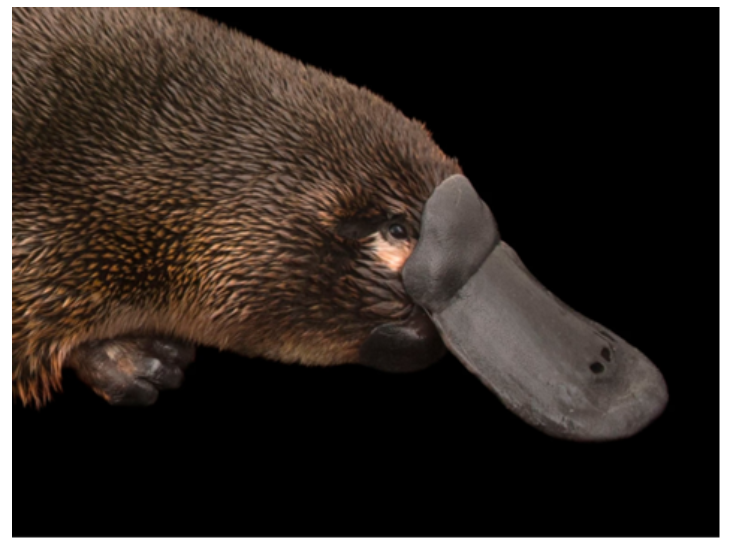
Handling the climate Polycrisis - Edukemy Current Affair
Exam view: Climate Polycrisis: Effects of Climate Polycrisis and Ways to tackle; Government initiatives, National Adaptation Fund on Climate Change (NAFCC), State Action Plan on Climate Change (SAPCC)
About
Climate Polycrisis, a term popularized by Adam Tooze, refers to the interconnected and compounding crises stemming from climate change that affect multiple sectors and domains. This concept encompasses not only the physical impacts of climate change, such as rising temperatures, sea-level rise, and extreme weather events but also the social, economic, and political challenges that arise from these impacts. In India, the climate polycrisis is evident in the interconnections between various sectors like energy, infrastructure, health, migration, and food production, all of which are being influenced by climate change.
Causes of Climate Polycrisis:
- Greenhouse Gas Emissions: Human activities, including the burning of fossil fuels, deforestation, agricultural practices, and industrial processes, release greenhouse gases (GHGs) like CO2, methane, and nitrous oxide into the atmosphere. These GHGs trap heat, leading to global warming and climate system alterations.
- Unsustainable Consumption and Production: Unsustainable consumption patterns deplete natural resources faster than they can regenerate, while unsustainable production practices generate waste and pollution, harming the environment and reducing its capacity to provide essential services.
- Lack of Political Will and Collective Action: Addressing the climate crisis requires coordinated efforts at local, national, and global levels. A lack of political will and inadequate collective action can hinder the implementation of effective policies and measures to combat climate change.
Effects of Climate Polycrisis:
- Extreme Weather Events: India is experiencing more frequent and severe extreme weather events like cyclones, floods, droughts, and heatwaves due to the climate polycrisis. These events damage infrastructure, agriculture, and human settlements.
- Agriculture: Erratic rainfall patterns, prolonged droughts, and flooding disrupt crop cycles, leading to reduced yields and food insecurity. This can result in higher food prices and economic challenges for farmers.
- Water Scarcity: Rising temperatures and changing precipitation patterns can reduce the availability of freshwater, leading to conflicts over water resources and impacting public health.
- Sea-Level Rise: Coastal cities in India are at risk from sea-level rise, coastal erosion, and increased storm surges, which can displace communities and cause economic losses.
- Health Impact: Climate change can increase the risk of health problems such as heat-related illnesses, vector-borne diseases, and respiratory issues due to air pollution and wildfires, with vulnerable populations being particularly at risk.
- Economic Disruptions: Disruptions in sectors like agriculture or infrastructure can have cascading effects on the overall economy, including reduced agricultural productivity, infrastructure damage, and increased healthcare costs.
- Increased Energy Demands: Higher temperatures can lead to increased energy demands for cooling, straining the electricity grid and contributing to greenhouse gas emissions if fossil fuels are used for power generation.
- Climate Feedback Loops: Climate polycrises can trigger feedback loops, where one crisis exacerbates another, as seen with wildfires releasing stored carbon.
- Political Instability: Resource scarcity, displacement, and economic hardships can contribute to political instability and social unrest.
- National Security: Climate-related challenges can exacerbate tensions and conflicts over resources, impacting national security.
Tackling Climate Polycrisis:
- Implement National Carbon Accounting (NCA) systems to measure and track carbon emissions comprehensively.
- Promote carbon awareness and make carbon emissions more visible to the public.
- Introduce carbon taxation to incentivize carbon reduction efforts.
- Set science-based carbon reduction targets aligned with global climate goals.
- Predict and track progress using NCA data and adjust policies accordingly.
- Encourage innovation in carbon reduction technologies and practices.
- Introduce "carbon GDP" alongside traditional economic GDP to promote ecological sustainability.
- Foster public discourse and engagement on carbon emissions and sustainability.
- Align economic development and sustainability goals.
- Promote global adoption of NCA systems and international cooperation to address climate change collectively.
- Create new livelihoods related to carbon reduction.
- Integrate carbon accounting into various policy areas.
- Collaborate with other countries to address the global nature of the climate polycrisis.
Addressing the climate polycrisis necessitates a thorough and interconnected strategy that engages diverse segments of society, including individuals, businesses, governmental bodies, and international entities. The adoption of a national carbon accounting system stands as a pivotal measure within this collective effort, offering the necessary information and structure to facilitate informed choices and monitor advancements toward a more sustainable future.
Share the article
Edukemy’s Current Affairs Quiz is published with multiple choice questions for UPSC exams
MCQ
Get Latest Updates on Offers, Event dates, and free Mentorship sessions.

Get in touch with our Expert Academic Counsellors 👋
FAQs
UPSC Daily Current Affairs focuses on learning current events on a daily basis. An aspirant needs to study regular and updated information about current events, news, and relevant topics that are important for UPSC aspirants. It covers national and international affairs, government policies, socio-economic issues, science and technology advancements, and more.
UPSC Daily Current Affairs provides aspirants with a concise and comprehensive overview of the latest happenings and developments across various fields. It helps aspirants stay updated with current affairs and provides them with valuable insights and analysis, which are essential for answering questions in the UPSC examinations. It enhances their knowledge, analytical skills, and ability to connect current affairs with the UPSC syllabus.
UPSC Daily Current Affairs covers a wide range of topics, including politics, economics, science and technology, environment, social issues, governance, international relations, and more. It offers news summaries, in-depth analyses, editorials, opinion pieces, and relevant study materials. It also provides practice questions and quizzes to help aspirants test their understanding of current affairs.
Edukemy's UPSC Daily Current Affairs can be accessed through:
- UPSC Daily Current Affairs can be accessed through Current Affairs tab at the top of the Main Page of Edukemy.
- Edukemy Mobile app: The Daily Current Affairs can also be access through Edukemy Mobile App.
- Social media: Follow Edukemy’s official social media accounts or pages that provide UPSC Daily Current Affairs updates, including Facebook, Twitter, or Telegram channels.

 Source:
Source: 

